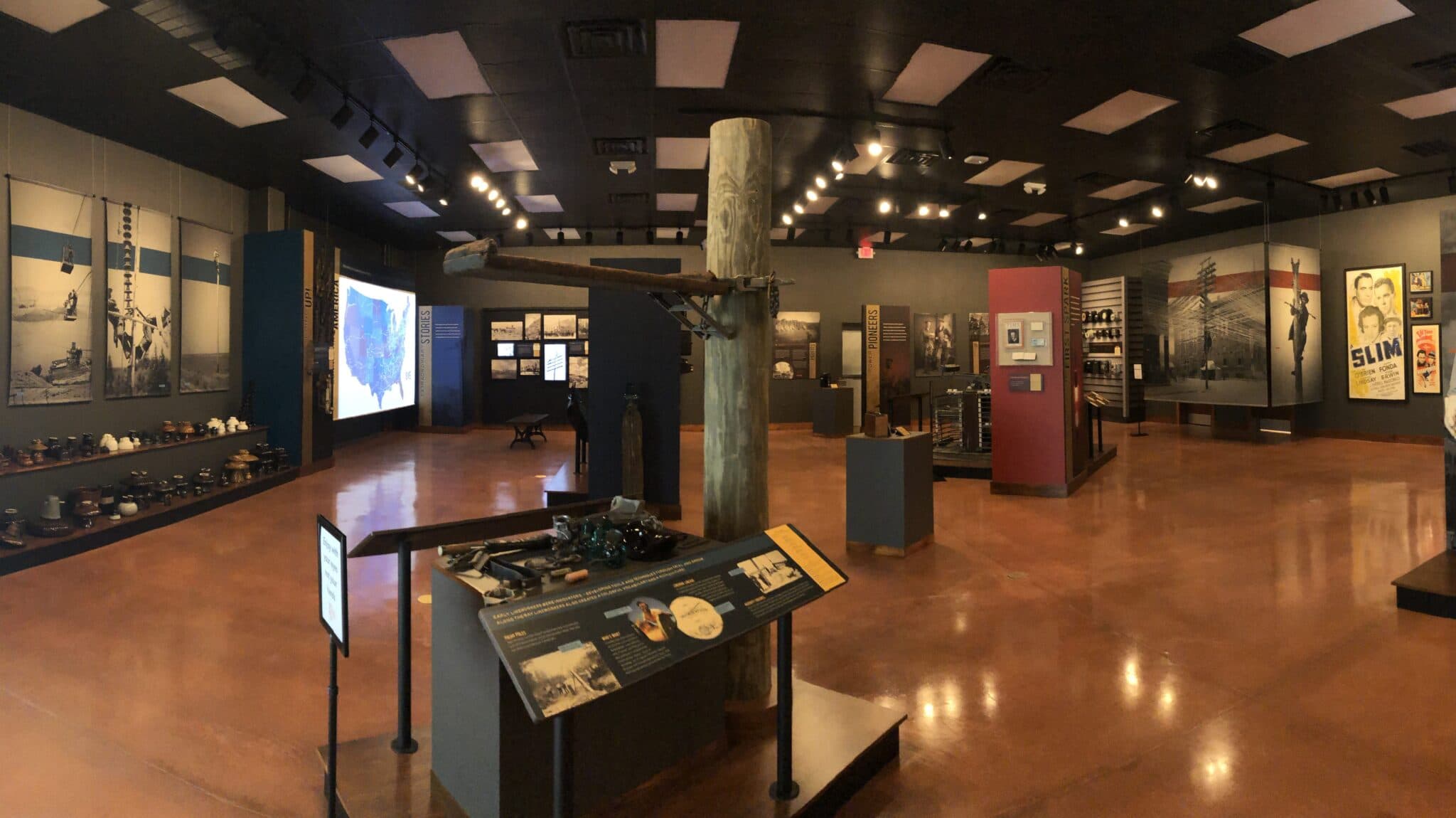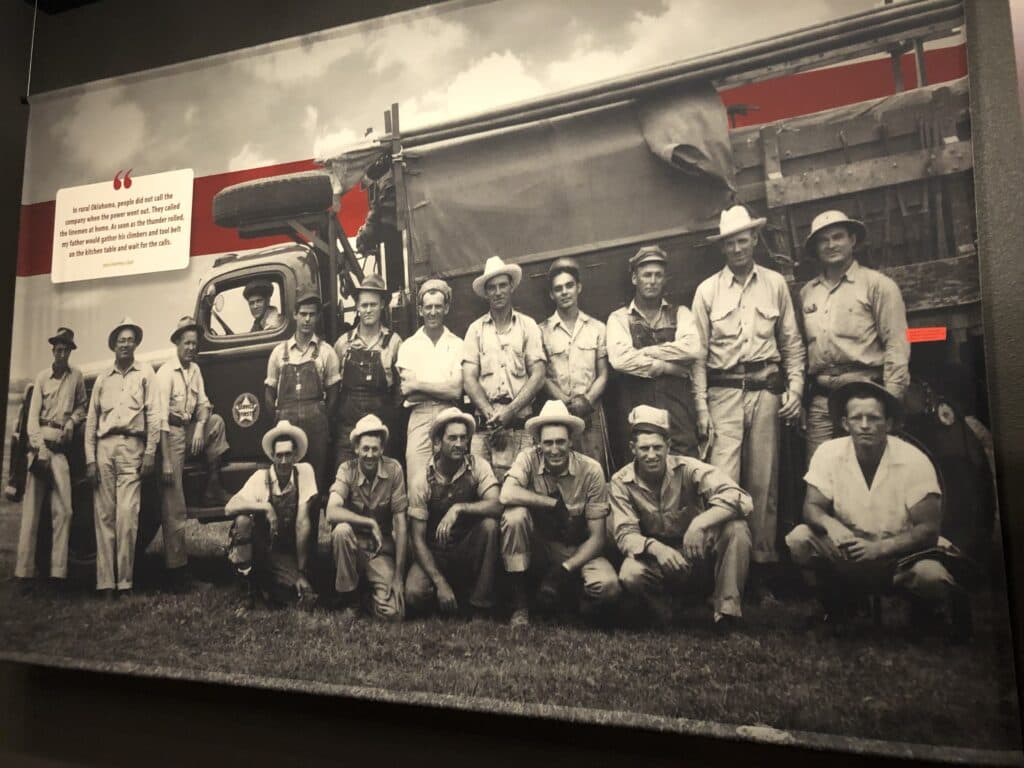From Telegraphs to Robots
A Lineworker Museum Rises in the Heart of Texas

Tucked outside a small Texas town along the square-foot building. Our small collection grew quickly Colorado River sits a new museum dedicated to collecting the objects and artifacts—and telling the stories—of an underappreciated trade. The Quanta Services Lineworker Museum at the Lazy Q Ranch just north of La Grange, Texas, celebrates the courage and fortitude of the men and women of linework. Spanning from the early days of the telegraph to the modern robotics used for high-voltage work, the newly completed museum highlights the unique individuals who built America one pole at a time.
The museum was the vision of John Colson, the founder and former CEO of Quanta Services and a former lineman, and Duke Austin, the current CEO of Quanta Services. John and Duke saw an opportunity to educate the industry and the general public about the life and work of lineworkers past and present. Their solution was to create a museum that coupled education with recruitment, celebrating the heritage of a 180-year-old profession that still faces high demand for workers.
In telling the lineworker story you have to go back to the early to mid-1800s. It was a dangerous time for the men who joined a linework crew. There was no training and no rules. These telegraph and early electrical power lineman lived like cowboys. And just like the cowboy, it was the perfect lifestyle to write about in books, songs, and movies. The museum features some of those cultural artifacts that show the lineworker’s influence on society as well as how society viewed those contributions.
Beyond pop culture, the displays demonstrate the lineworker’s historical significance to the country. The exhibit about the transcontinental railroad shows how vital the railroad was in connecting the telegraph, and then powerlines, from the East to the West. The need to build also meant the need to develop better tools and equipment. All the clothing, safety gear, and tools in the museum reveal the tremendous progress the industry has made in safety and technology.

I was hired as the museum director and curator when the museum was a dream and an empty 5,800-square-foot building. Our small collection grew quickly with the arrival of hundreds of insulators, tools, and equipment generously donated by Northwest Lineman College (NLC) in Idaho. The organizing and cataloging were truly a team effort. Founder John Colson, linework historian Alan Drew, and veteran lineman and Lazy Q instructor Greggory Bell, among others, were indispensable in identifying mystery objects or giving a donated artifact a story.
While NLC donated the largest number of artifacts, it was the dozens of individual donors who helped write the human stories woven throughout the exhibits. We received family photos, personal effects, and individual stories that painted a clearer picture of what it was like to be a lineworker before the days of cell phones and internet. A great example comes from Duke Austin himself. He is the son, grandson, great-grandson of linemen. His photos and family stories personalize the hard work and determination involved in being a lineworker. I also contributed a family artifact, belonging to my lineman grandfather, and used my mother’s words in describing her life as the daughter of a rural lineman.

Although the museum is both an educational tool and a vehicle for appreciating the industry, founders John Colson and Duke Austin want the museum to be much more. They want to inspire young people to join the linework family. Videos of lineworkers on the front lines during wars and building back lifesaving powerlines after catastrophic weather events send a clear message: You, too, can become a hero to thousands of people.
A museum’s collection is never really “complete.” The Quanta Services Lineworker Museum will always be open to donations of pictures, clothing, tools, equipment, and stories. Many experienced lineworkers I’ve spoken with do not think that what they have is important enough or old enough to go into a museum. But we have shown in our exhibits that a simple personal item or tool could be the missing piece in telling an all-new story. You never know what your contribution could inspire.
This story was originally published in Northwest Lineman College’s The Handline Magazine, Winter 2021 issue.
Elevate Your Workforce

Pre-Apprentice Program
Learn more about our 15-Week Electrical Lineworker Program.

Power Delivery Programs
Distance-learning apprentice training curriculum. Enroll your company's apprentices today

Lineman Apprenticeship Program
Instructor-led training and certification apprenticeship program to build your company’s apprenticeship.